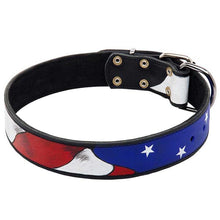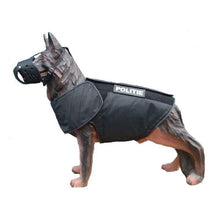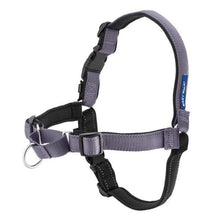Exploring the 5 Exceptional Senses of German Shepherds

We all know that all dogs can hear and smell better than us, but what other superpowers are they hiding? As working dogs, German Shepherds are prized for their superhuman speed, hearing, and most of all, their noses. Their sense of smell is so acute that alerting them to the presence of illegal drugs or explosives can be used as probable cause to search in a courtroom. So just how powerful is that nose of theirs?
1. Sense of smell: Dogs can smell 10,000-100,000 times better than humans. But thanks to selective breeding and that long snout that German Shepherds are famous for, they're at the upper end of that scale. Humans have an impressive 6 million scent receptor cells. But the German Shepherd Dog has 225 million of them. That's why they can detect odors far better than we can. They can detect scents over a mile away on land, and it can increase to up to 10 miles if the wind and conditions are right. They can also smell up to 40 feet underground and down all the way to 80 feet in the water. That's why cadaver dogs can work from a boat to recover a body. The German Shepherd can also follow scent trails that are one week old in the right environmental situations, and the part of the brain which processes smells is almost 40% larger in a German Shepherd than in a human. When I said they were superhuman when it comes to their sense of smell, it wasn't a joke! In fact, they're super canine as well, because most breeds of dog can't smell as well as a German Shepherd can.

2. Vision: There are two light receptors in all animal's eyes. Rods detect light and dark, and cones detect color. Dogs have rod-dominated retinas, unlike humans, that allows them to see much better in the dark. Not only do dogs have built-in night vision, but dogs also have better motion detection than humans have, which allows them to see when prey or foe is moving about. Keep that in mind in training. Your body language matters more than you think. Unfortunately, because their retinas contain only about one-tenth of the number of cones that humans have, dogs do not see colors as humans do.
Most people are what is known as trichromatic. This isn't true for red/green colorblind people, but again, most people are trichromatic and can see blue, green, and red. We can also see any mixture of those colors, like orange, yellow, purple, etc. Dogs see as color-blind humans see. A dog's retinas can distinguish two colors, making them bichromatic. The colors they can see are blue-violet and yellow. Dogs can also differentiate between shades of gray. Dogs are unable to see green, yellow, orange, and red.

Dogs typically have 20/75 vision. What this means is that they must be 20 feet from an object to see it as well as a human standing 75 feet away. But it's speculated that bird dogs like Labradors and Springer Spaniels have vision that may be closer to 20/20 so that they can see birds fall and locate them easier.
3. Taste: Dogs have fewer taste buds than we humans do. We have about 9,000, but the average dog only has 1,700. Taste buds in different parts of the tongue respond to different microscopic molecules so that we can discern between flavors. Like we humans, dogs can taste sweet, salty, sour, and bitter. But they can do something we can't. They have special taste buds aimed at tasting water solely. Most of us describe water as "tasteless." But to dogs, water has different flavors. These water receptors are located at the tip of the tongue, which is perfect because that's the part a dog dips in the water and curls under when drinking.
Dogs can't taste salt as well as humans, because they have never needed that ability. Since they're evolved to eat flesh, organ, and bone, they get all of the salt they need from those items. Unlike them, we omnivores and our herbivorous friends need the ability to taste salt to ensure that we consume enough to live.
Tests have shown that most dogs prefer beef and pork over chicken and lamb. They also prefer warm, moist foods over cold, dry foods. Again, evolving to eat freshly hunted prey, it makes sense that they prefer warm, moist foods.

Like us, different dogs have individual preferences when it comes to food. That can partly arise from preferring what food they ate as a puppy. One study even suggests that the food their mother ate while pregnant can influence a puppy’s future preferences. That's pretty wild!
4. Hearing: A German shepherd’s hearing is more acute and is about 4-7 times greater than ours. It can pick up sounds that are not available to our ears. High-pitched sounds, some specific low sounds and they can hear a car turn down the street before you hear them pull into the driveway.
Dogs have 18 muscles in their ears that enable them to move in multiple directions to locate the source of sounds they hear. Plus, they can hear out of each ear independently, allowing them to decipher precisely where a sound is coming from.

5. Touch: Dogs also have something else we don't have. Specialized hairs on their muzzle which are called vibrissae, but they are more commonly known as whiskers. Just like our hair, they are attached to nerves so you can feel when they brush against things. Dogs have great night vision, but their whiskers can help them navigate in dark, confined spaces. They also come in handy when hunting for small game in snow and vegetation because they can feel when their prey moves about.
A dog has the same amount of feeling in their faces as a human does with their fingertips. We feel the world with our fingers, they feel it with their face. Dogs, like most predators, have binocular vision. But unlike humans, their binocular vision isn't quite as good as ours, so they have difficulty seeing things that are really close. For those cases, the whiskers come in very handy at not just feeling solid objects, but also the air that bounces off objects as they sniff around.

And there you have it. A rundown of all of your German Shepherd's five senses. It's interesting to note that some of their superhuman senses come with downfalls, especially in the vision department. Then again, it makes sense. We can see red and green because we've evolved to eat fruits and most fruits that are green aren't ripe. We hope you found all this interesting. Please leave a like and definitely share this one! Thank you.
You may also like: The Surprising Reasons You Should Allow Your Dog To Sniff While On Walks
























